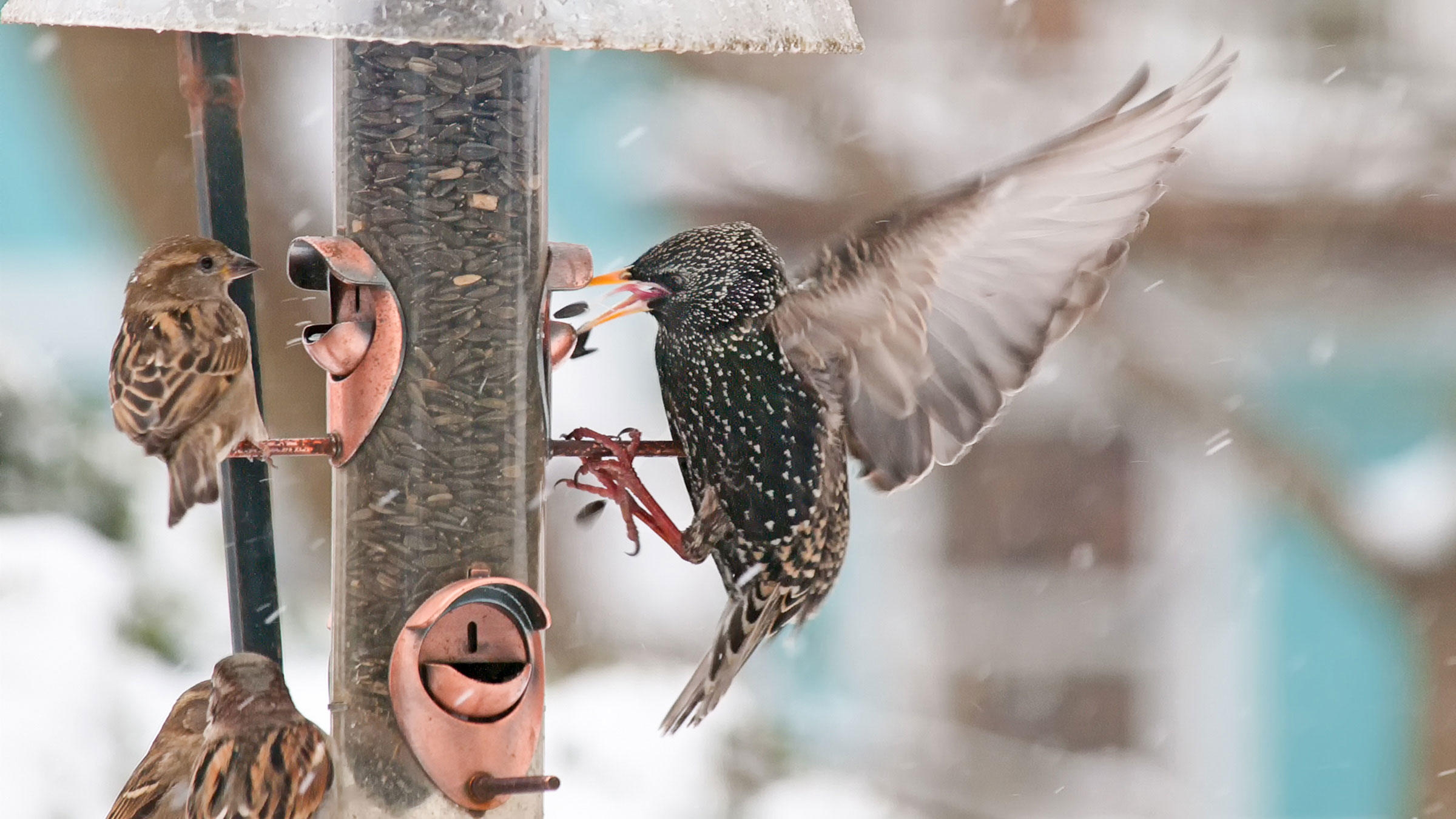This article was originally published in the Barnyards & Backyards Rural Living in Wyoming magazine, Spring 2019.
It usually starts with gardening. You plant a few shrubs, flowers, and trees. Soon, you realize you’ve created a habitat suitable for birds and other wildlife to call home. Before you know it, you’ve got feeders, water baths, and bird houses scattered throughout your yard. What a joy to watch bright-yellow goldfinches or soft gray juncos fliting about the feeders. That is, until a noisy flock of starlings swoops in to raid your feeders, exhausting your seeds (and your wallet).
What is a backyard bird watcher to do?
Start with an understanding why it’s happening. Birds will mob feeders when convenient and they have access. Most of the types of birds that do this tend to be big, intelligent, travel in large flocks, and may have a feeding strategy where they gather and save food for later. Smaller, timid birds that get along with others may also mob a feeder, but it is likely to be in a more orderly and gradual manner. These birds will rarely win a battle against the larger bully birds.
Are you a bully bird enabler?
Here is a quick quiz you can take to find out:
Are your feeders sloppy? Feeders that spill easily will often create a smorgasbord of seed on the ground. This attracts everything from mice, squirrels, turkeys, deer, and other birds and mammals. Old, cracked feeders may need to be replaced. This may be especially true if bossy birds and other raiders have had several attackson the feeder. Also check that the feeder you are using is suitable for the seeds you are filling it with. Are you feeding a bird seed mix? STOP! Birds will always pick through the seeds and throw out what they don’t want. Most Wyoming feeder birds do not like millet, so you’ll get a pile of those on the ground that will attract those pesky unwanted visitors. You can’t go wrong with black oil sunflower seed, nyjer (thistle) seed, and suet. For more info on what food Wyoming birds like, click here.
Are your feeders unprotected? The good news about bully birds is they are almost always big. This means you can defend the feeders by restricting access to just the smaller birds. Fitting a simple 2-inch x 2-inch wire mesh screen around feeders can create a cage that keeps bullies out but lets in songbirds. Wire mesh can be found at most hardware, garden, or feed stores. These retailers will also have a multitude of ready-made baffles and cages designed for keeping big birds, and squirrels, out of feeders.
Are you absolutely, completely fed up? Try simply removing the feeders when this happens. Your songbirds visit the feeders as a supplement to their regular diet, to which they’ll return once you remove the feeder. You can try war-like tactics such as blasting music, putting up shiny flashing, or erecting a scarecrow, but it’s also important to note most non-game birds are protected by the Migratory Bird Treaty Act with the exception of invasive species.
Bonus Question: Do you live in bear country? If your answer is yes, take your feeders down from April through October. Even if the feeders are out of reach of the bears, spilled and discarded seed can be an attractant. If bears discover your yard is a snack spot, you risk larger problems than the occasional raid on your feeders.









